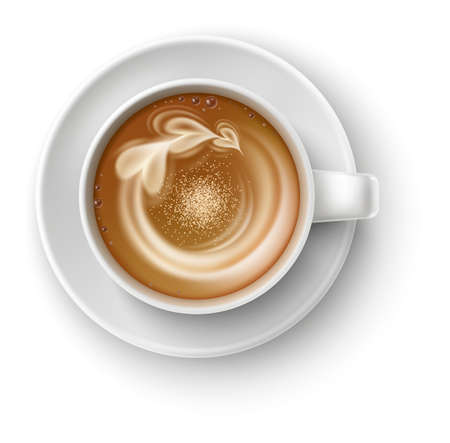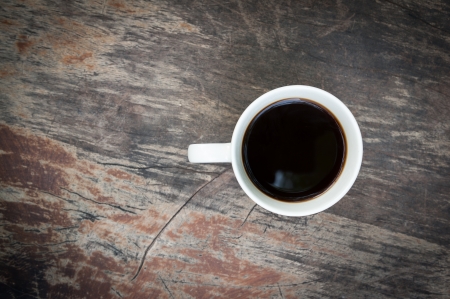Introduction to Nordic Coffee Culture
When most people think about coffee, they might imagine an espresso in Italy or a drip brew in the U.S. But over the past few decades, the Nordic countries—Sweden, Norway, Denmark, Finland, and Iceland—have quietly revolutionized how we think about specialty coffee. In fact, Scandinavians are among the world’s top coffee consumers per capita. But what makes their approach to coffee so unique?
The roots of coffee drinking in Scandinavia go back centuries. Coffee first arrived in the region during the 18th century and quickly gained popularity. Over time, it became more than just a beverage—it turned into a cultural ritual. Today, coffee is deeply woven into daily life across the Nordic region, symbolizing warmth, hospitality, and community.
Simplicity at Its Core
One of the defining features of Nordic coffee culture is its simplicity. Unlike sugary lattes or overly complex concoctions, Scandinavian coffee is typically light-roasted and served black. This allows the natural flavors of the beans to shine through. It’s not about masking taste; it’s about highlighting origin and quality.
Common Characteristics of Nordic Coffee
| Feature | Description |
|---|---|
| Roast Profile | Light roast to preserve delicate flavors |
| Brewing Methods | Manual pour-over, AeroPress, French press |
| Flavor Focus | Clean, bright notes with high acidity |
| Additives | Rarely any milk or sugar added |
| Presentation | Minimalist cups and settings |
A Culture of Quality and Community
Coffee in Scandinavia isn’t just about caffeine—it’s about connection. The Swedish concept of fika, for example, refers to taking a break with coffee and pastries while catching up with friends or coworkers. Its a cherished daily ritual that encourages slowing down and being present.
What is Fika?
Fika is more than just grabbing a cup of joe. It’s a pause in the day to share time with others. Whether at home or in the office, fika reflects values like equality, balance, and well-being. Coffee shops across Sweden and other Nordic countries often serve as community hubs where people gather not just for great coffee but also for meaningful conversation.
This cultural emphasis on quality over quantity has influenced specialty coffee scenes far beyond Europe—particularly in places like the United States where third-wave coffee continues to grow. Many American roasters and cafés have adopted Nordic roasting styles and brewing techniques, helping spread this minimalist yet impactful approach around the globe.
Scandinavian Influence on Specialty Coffee
When we talk about the third wave coffee movement, its impossible not to mention the major role that Scandinavian countries—especially Sweden, Norway, and Denmark—played in shaping it. These nations didn’t just follow trends; they helped redefine what specialty coffee means around the world.
Light Roasts: A New Flavor Experience
Traditionally, coffee was known for its dark, bitter taste. But Nordic roasters challenged this idea by embracing light roasts. This roasting style preserves the natural flavors of the coffee bean and highlights fruity, floral, and acidic notes that were often lost in darker roasts. This approach offered coffee drinkers a whole new flavor experience—one that focused on origin and bean quality over roast intensity.
Transparency and Traceability
Another key part of the Nordic influence is their commitment to transparency. Scandinavian roasters began sharing detailed information about where their beans came from, how they were processed, and even who grew them. This level of openness built trust with consumers and encouraged ethical sourcing practices across the industry.
Direct Trade with Farmers
Instead of going through traditional importers or brokers, many Nordic coffee companies started working directly with farmers. This direct trade model ensures that more money goes to the producers and fosters long-term relationships built on quality and sustainability. Its not just good business—its a more human way to do business.
Key Elements of Nordic Coffee Culture
| Element | Description |
|---|---|
| Light Roast Profile | Brings out unique flavors from each origin; less bitter, more complex. |
| Transparency | Detailed info about farm origin, processing methods, and ethical sourcing. |
| Direct Trade | Establishes direct relationships between roasters and farmers for better quality and fair pay. |
A Shift in Global Coffee Standards
The impact of Scandinavian coffee culture has gone far beyond Northern Europe. Cafés in cities like Portland, San Francisco, and New York have adopted similar values—serving lighter roasts, highlighting single-origin beans, and telling stories behind every cup. What started in cozy cafés in Oslo or Copenhagen is now a global standard for what great coffee can be.

3. The Role of Design and Aesthetics
One of the key elements that set Nordic coffee culture apart is its strong connection to Scandinavian design. Clean lines, natural materials, and a minimalist approach are not just found in furniture or home decor—they deeply influence how coffee shops look, feel, and even function across the region. This sense of simplicity and calm has become part of the experience, creating environments where people feel relaxed and focused on the quality of their coffee.
Café Environments Inspired by Minimalism
In Nordic countries like Sweden, Norway, and Denmark, cafés often resemble cozy living rooms more than bustling commercial spaces. Youll find light wood furniture, soft lighting, and plenty of open space. These design choices arent just about looks—they encourage slower moments, conversation, and mindfulness, perfectly aligning with the “Fika” concept in Swedish culture (a break for coffee and connection).
Key Elements of Nordic Café Design
| Design Element | Description |
|---|---|
| Natural Materials | Use of wood, stone, and wool to create warmth and authenticity |
| Neutral Color Palettes | Soft whites, grays, and earthy tones promote calmness |
| Functional Furniture | Sleek tables and chairs designed for comfort and durability |
| Open Layouts | Spacious setups that avoid clutter and noise |
Equipment That Reflects Design Values
The same minimalist principles extend to the tools used in making coffee. Scandinavian roasters and baristas often use simple but high-quality equipment. Sleek pour-over kettles, matte-finish grinders, and clean-lined espresso machines are common in Nordic-style cafés. The goal is always clarity—both in flavor and presentation.
Branding with a Nordic Signature
Nordic coffee brands have also made an impact globally thanks to their distinctive aesthetic. From packaging design to logos and social media presence, these brands focus on minimalism that reflects quality over quantity. Its common to see single-origin beans packed in plain bags with small fonts and neutral colors—letting the product speak for itself.
Examples of Nordic-Inspired Coffee Brands
| Brand | Country | Design Focus |
|---|---|---|
| Tim Wendelboe | Norway | Simplicity in packaging; focus on origin stories |
| Koppi Coffee Roasters | Sweden | Clean visual identity; modern typography |
| The Coffee Collective | Denmark | User-friendly info graphics; eco-friendly design choices |
This blend of thoughtful design and exceptional coffee has helped shape a unique global identity for Nordic cafés—a vibe thats being replicated from Brooklyn to Tokyo.
Sustainability and Ethical Sourcing
One of the most defining traits of Nordic coffee culture is its unwavering dedication to sustainability and ethical sourcing. This goes beyond just offering organic beans—it’s about building a transparent, responsible supply chain from farm to cup. Scandinavian roasters and cafes are known for their efforts to reduce environmental impact while supporting farmers with fair wages and long-term partnerships. These values have started to influence the U.S. specialty coffee scene in big ways.
Environmental Responsibility
Nordic coffee companies often lead the charge in minimizing waste and energy usage. From compostable packaging to carbon-neutral roasting facilities, theyre constantly innovating to reduce their footprint. Many Scandinavian cafes also promote a “slow coffee” experience, encouraging customers to dine in with reusable cups rather than grab-and-go culture.
Common Environmental Practices in Nordic Coffee Culture
| Practice | Description |
|---|---|
| Carbon-Neutral Roasting | Using renewable energy sources or offsetting emissions during roasting processes. |
| Compostable Packaging | Biodegradable bags and materials to reduce landfill waste. |
| In-Cafe Sustainability | Encouraging ceramic mugs over disposables and offering recycling stations. |
Fair Labor and Transparent Sourcing
Scandinavian roasters are known for working directly with farmers, often traveling to origin countries to establish personal relationships. These direct trade models ensure that producers receive better compensation and are treated with dignity. Transparency reports detailing how much farmers are paid, what farms the beans come from, and how they’re processed are common practice among top Nordic brands—and now, more American roasters are adopting this model too.
Key Differences Between Traditional and Nordic-Inspired Sourcing
| Sourcing Model | Traditional Coffee | Nordic-Inspired Coffee |
|---|---|---|
| Farmer Compensation | Often unknown or based on commodity prices | Transparent and usually above Fair Trade minimums |
| Sourcing Relationships | Mediated by importers or brokers | Direct trade with producers at origin |
| Supply Chain Transparency | Limited visibility for consumers | Detailed reports shared publicly by roasters |
A Shared Vision Across the Atlantic
The U.S. specialty coffee community is increasingly aligning itself with these Nordic values. Many American roasters now prioritize transparency, sustainability, and ethical sourcing—not just because its trendy, but because it reflects a deeper respect for both people and planet. As this movement continues to grow stateside, it’s clear that Scandinavian coffee culture has made a lasting impression far beyond its chilly borders.
5. Nordic-Style Coffee in the U.S.
In recent years, American coffee culture has taken a fresh turn thanks to the influence of Scandinavian countries like Sweden, Norway, and Denmark. The minimalist, quality-focused approach of Nordic coffee is making its way into cafés across the United States. From lighter roasts to clean brewing methods and cozy café designs, Nordic-style coffee is reshaping how Americans experience their daily brew.
Light Roast Revolution
One of the most noticeable changes is the shift toward light roast coffee. Traditionally, many American roasters leaned toward medium or dark roasts. However, inspired by Nordic preferences, more U.S. roasters are now focusing on lighter profiles that highlight the natural flavors and acidity of high-quality beans.
| Roast Type | Flavor Profile | Common Origin |
|---|---|---|
| Nordic Light Roast | Bright, fruity, floral | Ethiopia, Kenya |
| Traditional U.S. Medium Roast | Nutty, chocolatey | Colombia, Brazil |
Simplified Brewing Techniques
American cafés are also embracing Nordic brewing methods like pour-over (especially V60), AeroPress, and batch brews with precise temperature control. These techniques focus on clarity and balance rather than boldness or heaviness. The result is a cup thats clean and complex—perfect for slow sipping rather than quick caffeine fixes.
Popular Nordic-Inspired Brewing Methods in U.S. Cafés
- Hario V60 – for clarity and brightness
- AeroPress – ideal for single cups with bold yet clean flavor
- Kalita Wave – offers balanced extraction with ease
Café Design and Ambience
Nordic influence goes beyond the cup—it’s also visible in café interiors. Many American coffee shops are adopting Scandinavian design elements like natural wood furniture, neutral color palettes, soft lighting, and communal seating. This creates a calm and inviting atmosphere that encourages people to stay longer and truly enjoy their coffee experience.
A Focus on Ethics and Sustainability
Another core aspect of Nordic coffee culture is its commitment to ethical sourcing and sustainability. This value is now shared by an increasing number of U.S.-based roasters who emphasize transparency in sourcing, direct trade relationships with farmers, and environmentally friendly packaging. Its not just about making great coffee—its about doing it responsibly.
Key Values Shared Between Nordic and U.S. Specialty Coffee Scenes
- Transparency in sourcing
- Sustainable farming practices
- Direct trade partnerships
The rise of Nordic-style coffee in America shows how global inspiration can lead to local transformation. As more cafés adopt these Scandinavian principles, U.S. coffee culture continues to evolve—one thoughtful cup at a time.
6. What the U.S. Can Learn from Nordic Coffee Culture
Scandinavian countries like Sweden, Norway, and Denmark have become global leaders in specialty coffee—not just for how they brew it, but for how they live it. In the U.S., where coffee is often about speed and convenience, there’s a lot to learn from the Nordic approach, which values quality, intention, and community.
Intentionality Over Hustle
One of the most noticeable differences is how Scandinavians treat their coffee time. Coffee isn’t just fuel—it’s a moment to slow down. In Sweden, they even have a word for it: fika. It means taking a break with coffee and something sweet, often with friends or coworkers. This built-in pause during the day shows how intentionality can shape culture.
In contrast, many Americans drink coffee on-the-go, in cars or at desks. While that won’t change overnight, small shifts—like taking five minutes to enjoy your morning brew without multitasking—can bring more mindfulness to your daily routine.
Quality Over Quantity
Nordic countries focus heavily on the quality of their beans and brewing techniques. They often prefer light roasts that highlight the origin flavors of the coffee, rather than masking them with sugar or cream.
Here’s a quick comparison:
| Nordic Approach | Typical U.S. Approach | |
|---|---|---|
| Coffee Roast | Light roast to preserve origin flavor | Darker roast for boldness and consistency |
| Brew Method | Manual pour-over, AeroPress, precision brewing | Drip machines or fast espresso drinks |
| Cup Size | Smaller servings with strong flavor clarity | Larger sizes (12–20 oz) often diluted with milk/syrup |
| Add-Ins | Coffee usually served black or with minimal milk | Sugar, flavored syrups, whipped cream common |
Coffee as a Community Connector
Coffee in Scandinavia is deeply social. Whether its gathering with friends at home or sitting in a cozy café, it’s about connection. Cafés are designed to feel welcoming and warm—think natural wood accents, soft lighting, and minimal distractions.
This contrasts with many American cafés that cater to remote work or quick pick-ups. There’s an opportunity here: creating spaces that encourage real-life interaction could foster stronger communities through coffee.
Simple Ways Americans Can Embrace Nordic Coffee Values:
- Create your own “fika”: Take 10 minutes each day to enjoy coffee without distractions.
- Taste before you add: Try drinking your coffee black before adding cream or sugar.
- Brew better at home: Invest in a good grinder and try manual brewing methods like pour-over.
- Support local roasters: Look for roasters who emphasize single-origin beans and sustainable sourcing.
The heart of Nordic coffee culture isn’t just what’s in the cup—it’s how people experience it together. That mindset can elevate everyday coffee moments across America.


